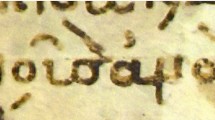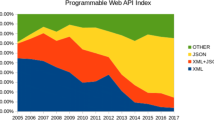Abstract
There is wide agreement on the need for a markup standard for encoding literary texts. The Standard Generalized Markup Language (SGML) seems to provide the best basis for such a standard. But two problems inhibit the acceptance of SGML for this purpose. (1) Computer-assisted textual studies often require the maintenance of multiple views of a document's structure, but SGML is not designed to accommodate such views. (2) An SGML-based standard would appear to entail the keyboarding of more markup than researchers are accustomed to, or are likely to accept. We discuss five ways of dealing with the first problem, and several ways of reducing the burden of markup. We conclude that the problem of maintaining multiple views can be surmounted, though with some difficulty, and that the markup required for an SGML-based standard can be reduced to a level comparable to that of other markup schemes currently in use.
Ron Hayter is the Senior Software Developer of Software Exoterica Corporation, Ottawa, Canada.
Maria Karibaba obtained the M.Sc. degree in Computing and Information Science at Queen's University and returned to Greece.
George Logan is Head of the Department of English at Queen's University, Canada.
John McFadden is the President of Software Exoterica Corporation, Ottawa, Canada
Similar content being viewed by others
References
Association of American Publishers. Standard of Electronic Manuscript Preparation and Markup. Electronic Manuscript Series. Association of American Publishers, 1987.
Barnard, D. T., C. A. Fraser, and G. M. Logan. “Generalized Markup for Literary Texts”. Literary and Linguistic Computing, 3, 1 (1988), 26–31.
Coombs, J., A. Renar, and S. DeRose. “Markup Systems and the Future of Scholarly Text Processing”. Communications of the Association for Computing Machinery, 30, 11 (1987), 933–47.
Fraser, C. “An Encoding Standard for Literary Documents”. M.Sc. Thesis. Department of Computing and Information Science, Queen's University, 1986.
Gonnet, G. H., and F. W. Tompa. Mind Your Grammar: A New Approach to Modelling Text. Technical Report OED-87-01. University of Waterloo Centre for the New Oxford English Dictionary, 1987.
HUMANIST Electronic Bulletin Board. c/o HUMAN-IST@MUTORONTO. BITNET. Discussions in November and December 1987.
Ide, N., and M. Sperberg-McQueen. “Encoding Guidelines Meeting”. ACH Newsletter, 9, 4 (1987), 2, 4, 6.
International Organization for Standardization. Information Processing — Text and Office Systems — Standard Generalized Markup Language (SGML). ISO 8879–1986 (E), 1986.
Shakespeare, W. The Riverside Shakespeare. Ed. G. B. Evans et al. Houghton Mifflin, 1974.
Smith, J. M. “The Standard Generalized Markup Language (SGML) for Humanities Publishing”. Literary and Linguistic Computing, 2, 3 (1987), 171–75.
Software Exoterica Corporation. XGML Application Developer's Manual. Software Exoterica Corporation, 1988.
Sperberg-McQueen, Michael. “ACH Project for Text Encoding Standards”. ACH Newsletter, 9, 4 (1987), 1–2.
Author information
Authors and Affiliations
Additional information
David Barnard is Head of the Department of Computing and Information Science at Queen's University, Canada.
This paper has benefited greatly from comments provided by the referees.
Rights and permissions
About this article
Cite this article
Barnard, D., Hayter, R., Karababa, M. et al. SGML-based markup for literary texts: Two problems and some solutions. Comput Hum 22, 265–276 (1988). https://doi.org/10.1007/BF00118602
Issue Date:
DOI: https://doi.org/10.1007/BF00118602




